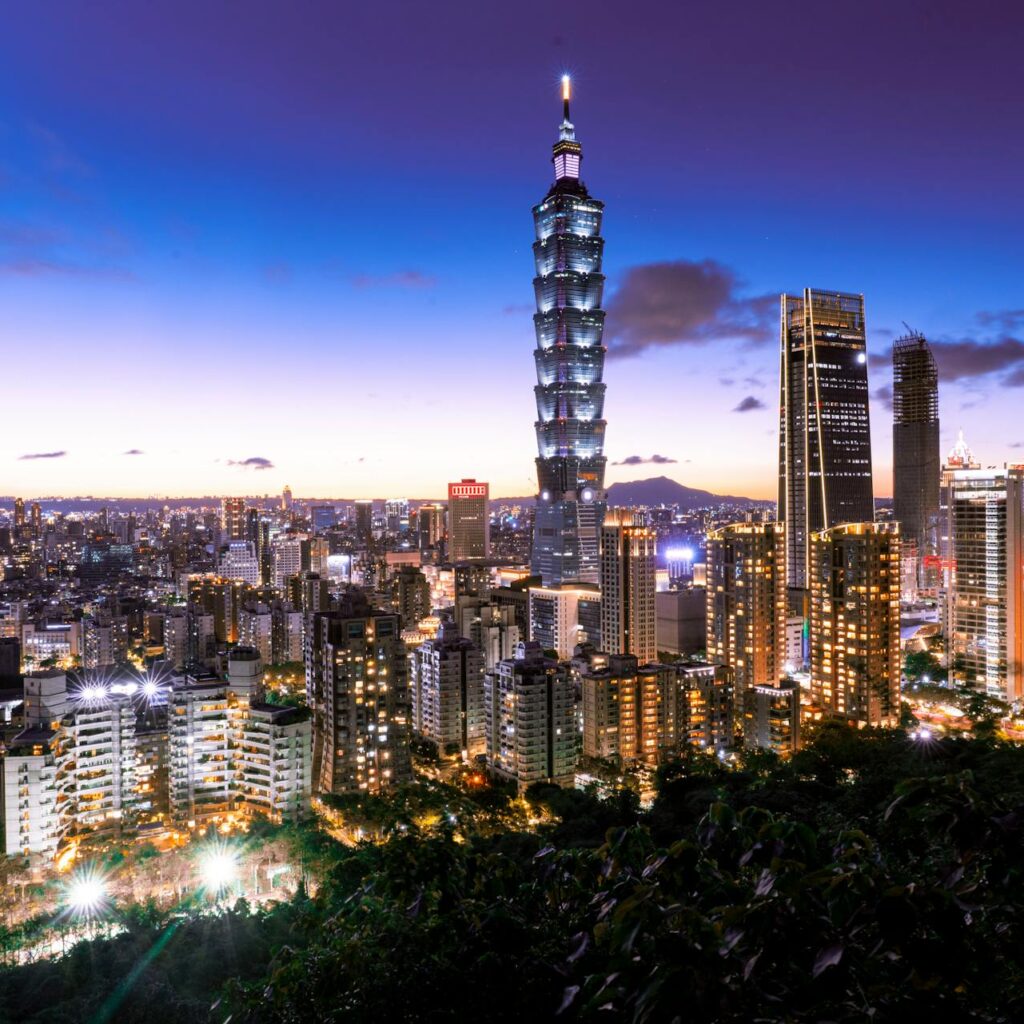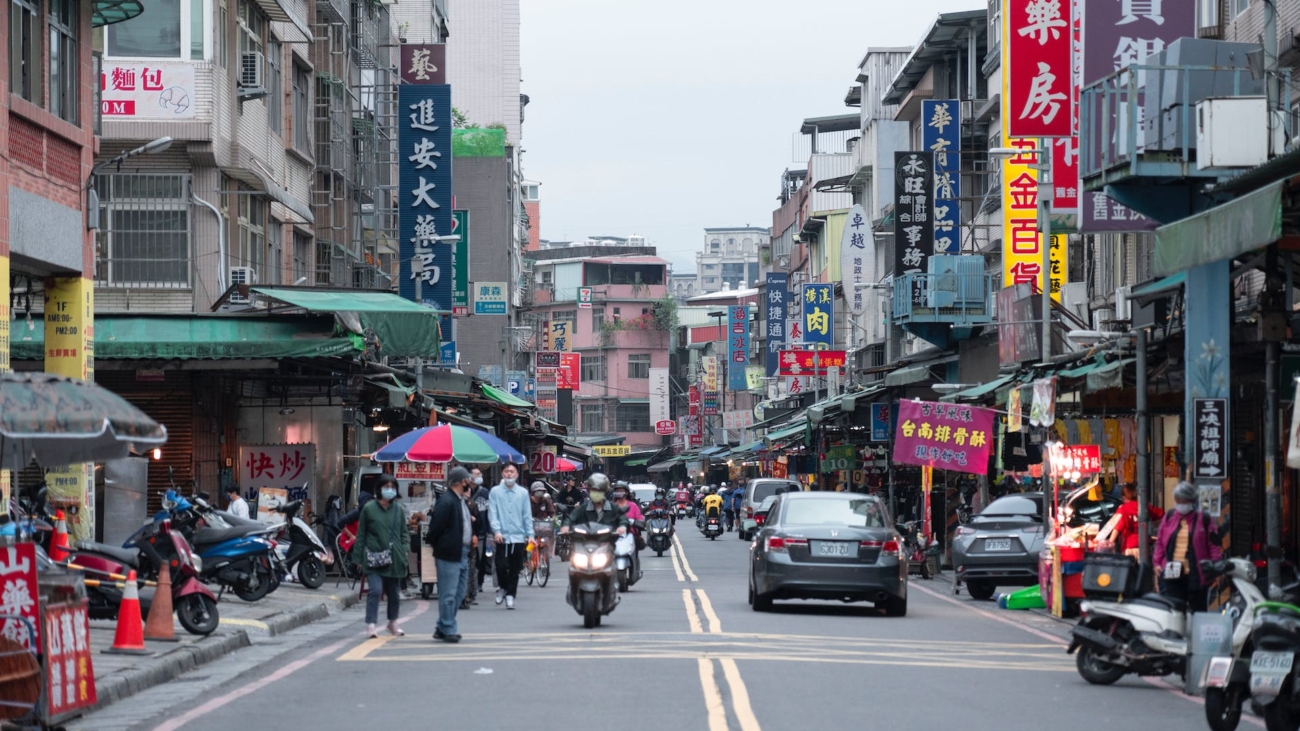Taiwan, a geopolitical puzzle nestled in the heart of East Asia, sparks debates on its official status, geopolitical positioning, and intricate dance with the neighbouring giant, China. This analysis, tailored for a discerning audience with curiosity, embarks on a journey to unravel Taiwan’s complexities, spanning its geography, history, and economic prowess.
Geography: A Comparative Geoeconomic Landscape
Western Pacific vs. Persian Gulf
Taiwan’s strategic location in the Western Pacific Ocean prompts a comparative analysis with neighbouring regions, including Japan, South Korea, Hong Kong, and Singapore. Adding a contrasting perspective, we turn our gaze to the Persian Gulf, acknowledging the developed nations within that realm.
Populations in Millions:
Western Pacific:
- South Korea: 51M
- Japan: 125M
- Taiwan: 23M
- Hong Kong: 7M
- Singapore: 6M
Persian Gulf:
- UAE: 10M
- Qatar: 3M
- Bahrain: 1.5M
- Kuwait: 4M
- Saudi Arabia: 32M
GDP per Capita (in USD):
Western Pacific:
- Japan: 39k
- South Korea: 34k
- Taiwan: 33k
- Hong Kong: 49k
- Singapore: 74k
Persian Gulf:
- Saudi Arabia: 23k
- UAE: 44k
- Kuwait: 24k
- Qatar: 66k
- Bahrain: 26k
These statistics illuminate an intriguing pattern, with Taiwan, Japan, and South Korea sharing a GDP per capita range of 30k to 40k USD. Despite differences, the shared economic affluence within this region is notable.
Population Density:
- Japan: 338 per sq km
- South Korea: 515 per sq km
- Taiwan: 650 per sq km
Taiwan’s high population density reflects an urbanized landscape, correlating with its impressive GDP per capita and human development indicators.
Historical Trajectory: From Democracy to Economic Miracle
Genesis of Taiwan
Understanding Taiwan’s history is essential to decipher its current geopolitical landscape. From its roots and Chinese connections to its trajectory towards democracy, Taiwan’s historical narrative is nuanced.
Taiwan’s urbanization is a key facet of its developmental journey, with a handful of cities dominating the landscape. The island’s infrastructure, particularly its impressive road and rail networks, facilitates seamless connectivity, standing as a testament to its economic progress.
Taiwan’s history is intricately tied to Chinese migration, starting in the 17th century. Initially inhabited by indigenous peoples, Taiwan saw an influx of Han Chinese settlers, strengthening cultural ties with mainland China. Under Qing Dynasty rule, Chinese influence deepened, leading to Taiwan becoming a part of the Chinese empire. The Japanese colonial era from 1895 to 1945 marked a departure from Chinese governance.
Post-World War II, Taiwan was returned to the Republic of China (ROC), bringing a distinct political influence. The CCP’s victory in the Chinese Civil War in 1949 prompted the KMT’s retreat to Taiwan, shaping a separate identity. Democratization in the late 20th century allowed for the emergence of a distinct Taiwanese identity, setting the stage for Taiwan’s current perception as a separate entity from the People’s Republic of China (PRC).
The Taiwan Miracle
The “Taiwan Miracle” refers to the remarkable period of rapid economic growth and industrialization that unfolded in Taiwan during the early 1960s. This transformative era laid the groundwork for the island’s significant socio-economic evolution. Initiated under the governance of the Kuomintang (KMT) party, Taiwan’s economic miracle was characterized by strategic policies and initiatives.
Key elements of the Taiwan Miracle included land reforms, infrastructural development, and a focus on export-oriented industrialization. The government implemented policies to encourage investment, foster innovation, and cultivate a skilled workforce. Taiwan emerged as a global economic player, particularly in industries such as electronics, textiles, and petrochemicals.
This economic boom propelled Taiwan onto the world stage, creating a robust and diversified industrial base. The island’s GDP soared, and its per capita income witnessed substantial growth. Furthermore, the economic success paved the way for a broader societal transformation, ultimately contributing to Taiwan’s shift from a one-party state under martial law to a multi-party democracy in the late 1980s and early 1990s.
The Taiwan Miracle stands as a testament to the island’s resilience, adaptability, and capacity for innovation. It not only elevated Taiwan’s economic stature but also played a pivotal role in shaping the nation’s political landscape, setting the stage for its evolution into a dynamic and democratic society.

Photo by Jimmy Liao: https://www.pexels.com/photo/17007764/
Unseen Dynamics: Coastal Strategies and Identity Crisis
Navigating Coastal Dynamics
Taiwan’s coastal geography, strategically positioned in the Western Pacific, plays a pivotal role in shaping regional dynamics. The Taiwan Strait, separating it from China, becomes a focal point for both economic and military considerations. China’s aggressive pursuit of maritime control, driven by economic dependencies on coastal trade routes, heightens tensions in the region.
The United States, aligning with Taiwan’s interests, deploys its navy, intensifying the delicate balance between the U.S. and Chinese naval forces. The competition for shipping routes in the South China Sea adds complexity to the geopolitical chessboard. Taiwan’s shorter coastline contrasts with China’s extensive shores, influencing their foreign policies. This coastal interplay underscores the intricate relationship between economic competition, naval strategies, and foreign policy in the broader context of regional and global security.
Identity Crisis and Linguistic Connections
Linguistically, Taiwan maintains a profound connection with China, with Mandarin, Hokkien, Hakka, and other languages forming the linguistic tapestry. The migration of Han Chinese to Taiwan from the 17th century to 1949 further intertwines their identities.
This complex identity dynamic raises questions about Taiwan’s geopolitical positioning, especially as it stands as an ally to the USA. The intricacies of this relationship add layers of geopolitical significance to the island’s narrative.
Key Troubles: Political Identity and Military Challenges
Democracy in the Face of Authoritarianism
Navigating the complex intersection of democracy and authoritarianism, Taiwan faces an ongoing battle for political identity against the backdrop of its super-urbanized landscape. The island’s democratic ethos clashes with China’s authoritative rule, magnified by their close geographical and historical ties. Taiwan’s strategic alliances with NATO, South Korea, and Japan reflect its proactive measures to fortify its position amidst regional challenges.
The geopolitical transformation post-1960 signifies a pivotal moment in Taiwan’s history, ushering in an era where the island consciously steers its trajectory in the face of China’s authoritarian influence. This intricate dance between democratic values and the looming shadow of authoritarianism continues to shape Taiwan’s political landscape, highlighting the delicate balance between asserting its identity and navigating geopolitical complexities.
Post-Democratization Shifts
The post-democratization era in Taiwan marks a transformative period in the island’s political and cultural identity. A significant surge is observed in individuals exclusively identifying as Taiwanese, underlining a strengthened sense of a unique national identity. Conversely, there is a notable decline in those identifying as both Taiwanese and Chinese nationals, indicating a nuanced relationship with mainland China.
Strikingly, individuals exclusively identifying as Chinese nationals have almost disappeared, signalling a profound shift in allegiance. This transformation not only reflects the impact of democratization on shaping a distinct Taiwanese identity but also highlights the evolving geopolitical dynamics between Taiwan and China. The diminishing identification with Chinese nationality suggests a complex interplay of historical ties, democratization influences, and the ongoing quest for an autonomous identity in Taiwan’s socio-political landscape.
Economic Triumphs and Global Standing
Lessons from Taiwan’s Economic Landscape
A meticulous analysis of Taiwan’s economic achievements is essential to comprehend its global standing.
Economic Composition:
- Taiwan’s GDP: 790 billion USD
- Semiconductors: 115 billion USD (14% of GDP)
Semiconductor Dominance:
Taiwan’s semiconductor sector holds a significant share, accounting for 20% of the global semiconductor industry. Taiwan Semiconductor Manufacturing Company (TSMC) emerges as a key player, occupying 50% of the world market in foundry operations.
Defence Industry and Global Competitiveness:
Assisted by foreign collaborations, Taiwan’s defence industry has produced an array of military assets, including fighter aircraft, missile systems, surface ships, and more. In the realm of global competitiveness, Taiwan secures noteworthy positions, ranking 16th in university-industry collaboration in R&D, 10th in company spending on R&D, and 22nd in capacity for innovation, as per the World Economic Forum’s Global Competitiveness Report 2017–2018.
Yacht Industry:
Taiwan’s prowess extends beyond technology and defense, with the nation emerging as the fourth-largest yacht-building nation by feet of yacht built in 2018.
Leadership Lessons from Taiwan: Nurturing Identity, Innovation, and Pride
In the dynamic geopolitical landscape, Taiwan offers invaluable lessons for aspiring leaders seeking to navigate complex challenges.
- Embrace and Understand Your Unique Identity:
Taiwan’s journey underscores the significance of a robust understanding of national identity. Future leaders should delve deeply into their country’s history, culture, and ethos, fostering a profound connection with the populace. Taiwan’s commitment to a distinctive identity, evident in the post-democratization era, showcases the resilience that comes with embracing and celebrating uniqueness.
- Strategic Positioning against Rivals:
Identifying key rivals and strategically positioning against them is crucial. Taiwan, juxtaposed with China, exemplifies the importance of highlighting and capitalizing on differences. Future leaders must articulate a narrative that resonates with their population, emphasizing the aspects that set their nation apart and galvanizing public support.
- Economic Competitiveness and Innovation:
Taiwan’s economic success, particularly the “Taiwan Miracle,” provides a blueprint for future leaders. Focusing on industries that are not easily replicable, such as the semiconductor sector, allows a nation to carve a niche in the global market. Prioritizing innovation and investing in key areas that can be dominated contribute to sustained economic growth.
- Forge Strong Foreign Alliances:
A robust foreign policy is essential for navigating international relations. Taiwan’s strategic alliances with NATO, South Korea, and Japan showcase the importance of building partnerships with strong nations. Future leaders should craft foreign policies grounded in win-win strategies, offering unique contributions that set their country apart on the global stage.
- Instill Pride and Nationalism:
Pride is the cornerstone of a cohesive and resilient nation. Taiwan’s emphasis on building a nation its citizens are proud of underscores the emotional connection between leadership and the populace. Future leaders should prioritize initiatives that foster national pride, creating a sense of belonging and shared purpose among citizens.
In essence, the Taiwan model imparts crucial lessons: the strength derived from understanding and embracing unique identity, the strategic positioning against rivals, the economic prowess rooted in innovation, the importance of strong foreign policy, and the pivotal role of national pride. Aspiring leaders would do well to draw inspiration from Taiwan’s nuanced approach, applying these principles to shape a resilient, innovative, and proud nation in the face of evolving global challenges.


Leave A Comment